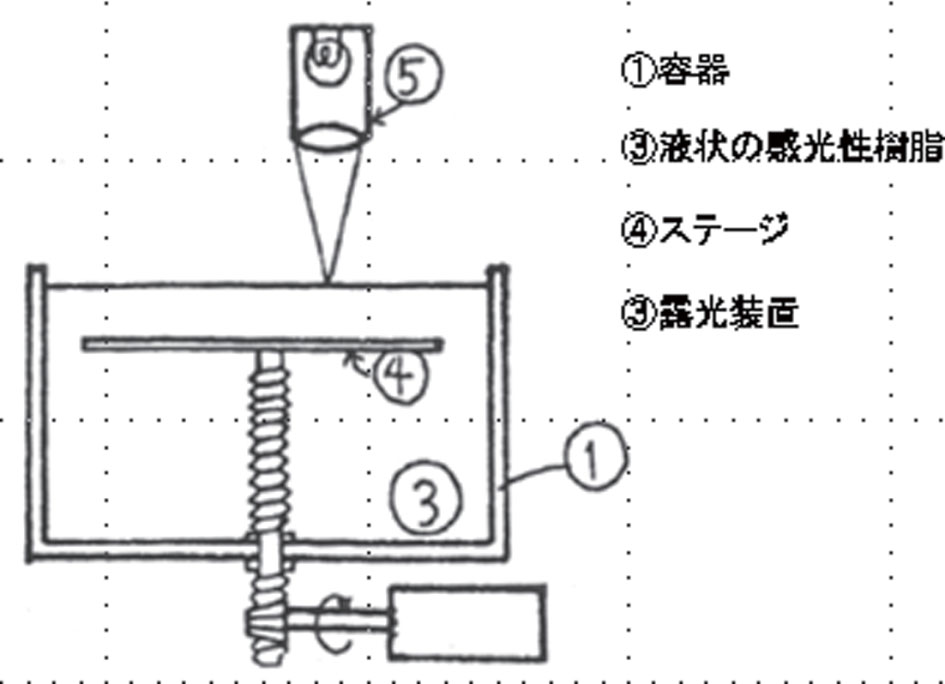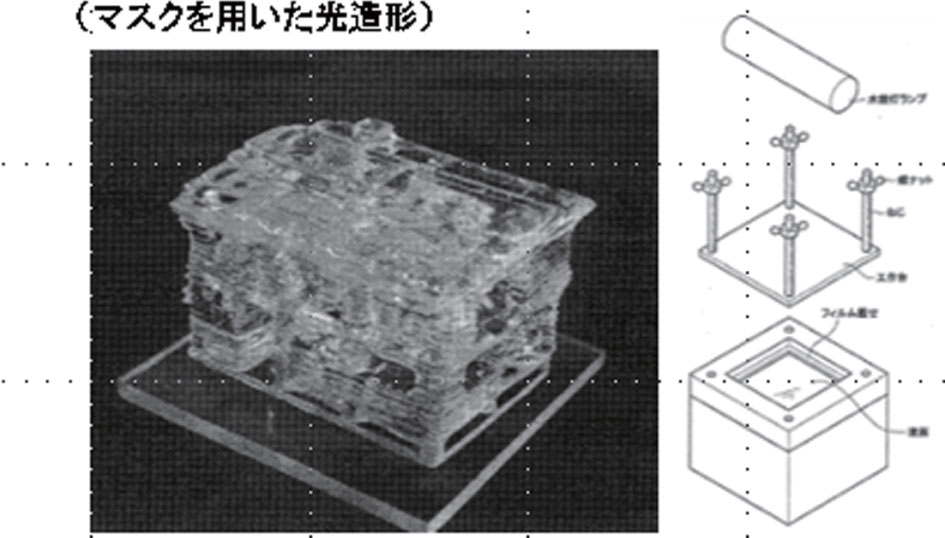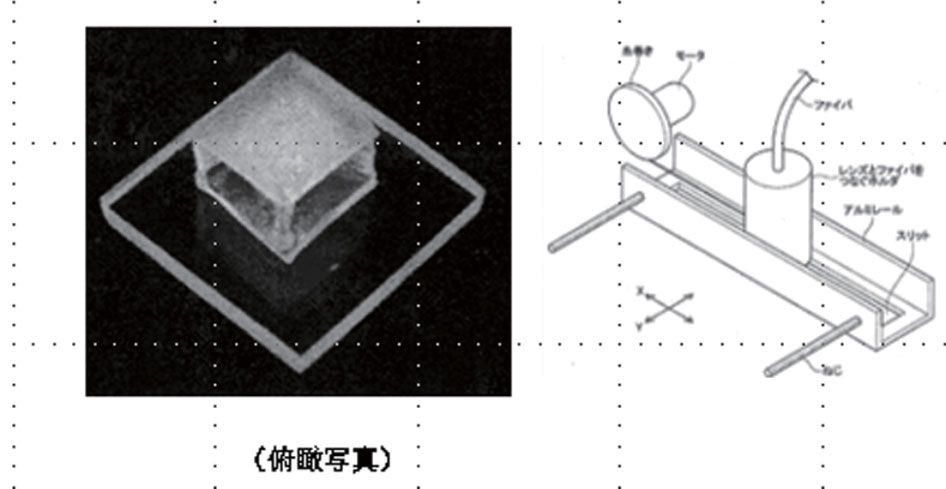| Pioneering research on three-dimensional printing |
| Hideo Kodama |
 Hideo Kodama |
In those days, the best method for fabricating a 3D model was to use holographic techniques. Holographic techniques can provide 3D images, but require reproduction equipment, and many complex calculations are required to obtain holograms for nonexisting objects. The recipient sought a more simple method. The basic idea of automatic fabrication of 3D models is to expose a liquid photohardening polymer to ultraviolet rays to solidify the surface. The solidified layer of a desired shape and thickness can be controlled by adjusting the exposure area, intensity, and time. The feature of this method is that the 3D model can be realized by exposure to ultraviolet, a process that can be easily automated. 3D data are converted to binary data which represent presence or absence. Then the shape represented by binary data can be realized. These descriptions about his new idea may give impression that his method is similar to numerical control machining. However the principle of his method of fabricating a solid model using liquid photohardening polymer is quite different from that of numerical control machining. Also, his method can realize complicated structures, which cannot be fabricated by numerical control machining. Additionally, because the method employs transparent liquid polymer, the product can be see-through.
Figure 1 shows the basic concept of the 3D printer. In this method, a solid model is fabricated by stacking cross-sectional layers. The number of layers is determined by considering the complexity of the desired shape and the accuracy needed for it. When liquid photohardening polymer is exposed to ultraviolet rays, it solidifies from the surface. Therefore, a solidified layer of the desired shape and thickness can be determined by controlling the exposure area, intensity, and time as the stage moves down. Figure 2 shows the first model of a house fabricated by the 3D printer. The total fabrication time was 1 hour and 40 minutes. Moreover, the recipient devised a method of fabricating 3D structure without using masks. The liquid surface is irradiated by UV light guided through an optical fiber. The light-guiding optical fiber is mounted on an XY plotter. Figure 3 is a photograph of the first 3D model fabricated using the equipment with the UV-light-guiding optical fiber attached to the XY plotter.
The recipient reported these results in the IEICE general conference in 1981, and the results were published in the IEICE Transactions on Electronics, Volume J64-C No. 4, April, 1981.
The 3D printer has come into practical use more than ten years after the recipientüfs first report. However, we have seen a remarkable progress in 3D printing technology in recent years. The technology has attracted much attention for its high potential to innovate the core manufacturing technologies in home electronics and automobile manufacturing industries as well as in other field such as medical and design industries. Recently, the method of modeling has diversified and the modeling can be fabricated from a wide variety of materials, such as plastic and metal, which have all helped to expand the application of 3D printers.
After President Obama mentioned the 3D printer in his State of the Union address in February 2013, it attracted even more attention. The 3D printing industry is expected to grow to a 20-billion-dollar industry. The 3D printing technology is called the Industrial Revolution of the 21st Century.



- üi1üjHideo Kodama, 56-144478 published Japanese translations of PCT international publication for patent applications
- üi2üjHideo Kodama, A Scheme for Three-Dimensional Display by Automatic Fabrication of Tree-Dimensional ModelüAIEICE Transactions on Electronics, Vol.J64-C No.4, pp.237-241, April 1981.
- üi3üjHideo Kodama, The equipment of automatic method for the three-dimensional plastic model with photo-hardening polymerüAIEICE general conference No.5, p.149, April 1981.
- üi4üjHideo Kodama, Automatic method for fabricating a three-dimensional plastic model with photo-hardening polymer, Review of Scientific Instruments, Vol.52 No.11, 1770-1773, August 1981.
- üi5üj Hideo Kodama, Invention of optical shaping methodüAThe Japan Macro-Engineers Society, No. 2, Vol. 9, March 1997.
- üi6üjHideo Kodama, Creation and Patent of Rapid Prototyping, 30th SENSOR SYMPOSIUM on Sensors, Micromachines and Applied Systems, The Institute of Electrical Engineering of Japan, November 2013.